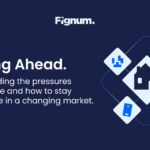Borrowers’ Needs Are Changing – Is Your Lending Strategy Keeping Up?

Customer expectations in lending have shifted significantly in recent years, driven by technological advancements and changing habits. Borrowers now expect faster decisions, greater transparency, and solutions that reflect their individual financial circumstances. For lenders, adapting to these demands requires rethinking traditional approaches and leveraging tools that streamline processes and improve decision-making.
Responding to Changing Expectations
Borrowers now expect quick decisions and lending options suited to their specific financial situations. However, many mainstream lenders still rely on traditional systems that create delays and limit their ability to deliver the speed and flexibility borrowers demand. This reliance on outdated processes often leaves borrowers frustrated and seeking alternatives.
Additionally, customers value transparency throughout the process, from application to decision. Providing clarity at every step is critical to meeting these expectations and building trust.
Technology at Work
Modern lending platforms provide the flexibility and speed required to meet these evolving expectations. Key benefits include:
-
Real-Time Data Access: Up-to-date borrower information enables more accurate and timely decisions.
-
Open Banking Integration: borrowers can share financial data securely, giving lenders a clearer view of affordability and risk without adding complexity to the process.
-
Automation: By automating steps such as underwriting and application reviews, lenders reduce delays and minimise errors, making the process smoother for both parties.
A Smarter Approach to Lending
Adapting to customer expectations is not about completely reinventing the process but about making strategic changes that address the most significant pain points. By embracing specialist technology, lenders can provide a more efficient, transparent, and personalised experience, meeting the needs of today’s borrowers while positioning themselves for future growth.


